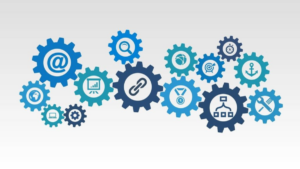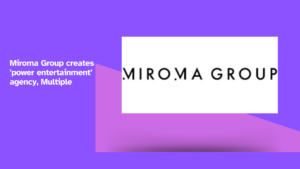By Tom Windsor, Digital Creative Director at Curious
The design industry has evolved rapidly over the last 20 years thanks, in no small part, to digital innovation. Back when Curious launched in 2002, computers still came with large boxes bolted to their back, the iPhone was still five years away from launch, and my role of Digital Creative Director didn’t exist.
Nowadays all design projects now involve digital in some form; from websites and apps, to campaigns and social media, and as user interfaces (UI) and product experiences become ever more complex, so too does the way that designers and development teams work together.
Ultimately, successful projects require a healthy marriage between design and development teams. From understanding why a button must be placed at an exact point, to why a component needs a specific function. Without great communication, it’s just too easy for things to get lost in translation, adding to the multiple obstacles that can get in the way of the client getting what they want.
There are different approaches to take, and at Curious as our digital design team continues to grow, we’ve consciously chosen never to have in-house developers, choosing instead to work with external partners to bring our designs to life. We are experts in design, not tech. It’s taken a while to land on the right approach of brand, digital, and development working in parallel. And we’re still learning and adapting today – that’s the fun bit. Here are some things I’ve learned along the way:
Lesson 1: The right partners are important
Look for partners who share your values. Who are excited about innovative design, understand the importance of brand, empathise with the end user, and have a passion for making things happen. Though of course, they need to also stand for performance, SEO and quality code.
You’ve got to be able to stand up for your design. As with many projects, you can expect to have some positive friction with developers along the way. There’s bound to be frustration felt on both sides, but I really love that bit when the developers and designers are battling for quality, and it’s that magic balance of both design and tech that makes the best digital experiences. You only find that magic when your developers understand your vision and back it.
Lesson 2: Treat developers as an extension of your team
The best development agencies put creativity and UX high up on their list. You ultimately want to find partners that do exactly that, but are also fun to work with and feel like an extension of your team because they share your values of design and quality. They’re also excited to get stuck into a challenge and want to be a part of the creative process.
I like to work with developers the same way we collaborate with strategy and design teams: solving things together. It creates the feeling that you’re designing more and more technically challenging sites and pushing the boundaries of design.
While we’re creating a concept or bouncing around an idea, we’ll regularly get on a call with the developers to chat it through or even develop a quick prototype. When you marry creativity with tech, different knowledge, skills, and approaches, you’re sure to almost always find a solution.
Lesson 3: Bring developers in early
The timeline of collaboration is essential. When developers are with you from the start they understand the context of your design decisions, they can input before you start the creative and challenge the client on technical thinking which massively shapes the project. If the developers have been involved in the upfront strategy and UX, and have signed off on the IA and wireframes, then they bring all that context into the build stage to ensure everything holds together. This leads to fewer surprises in the build stage and a happier, well-supported client.
What I know for certain is that successful projects require a healthy marriage between the design and development teams. User interfaces and product experiences are only going to evolve further and become more complex, so it’ll be increasingly vital that designers and development teams need to work together. Without cooperation, there is a risk that design aspects can be lost in translation, and the client doesn’t end up with what they were expecting.
To ensure that the initial design is realised in the result; whether it be from understanding why a button must be placed at an exact point, to why a component needs a specific function, the collaboration between design and development teams results in fewer gaps in the build and a more streamlined project.










